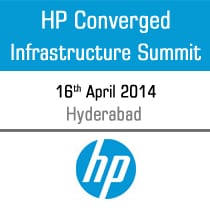|
Every 10 to 15 years, a tectonic shift re-shapes IT. Moving from mainframes to client/server and to Internet computing altered the way you purchased, built, consumed, and delivered technology. Now, once again, the landscape is shifting as we see the rise of mobility, social networking, big data, and cloud computing. Two-thirds of the workforce will soon own smartphones, and 40 percent will be mobile, adding to the management complexity brought about by the BYOD (bring your own device) phenomenon. Big data raises questions as to how IT will be able to manage structured and unstructured data sets that are too large to process using traditional data processing applications. Add to this picture an unpredictable global economy, scaled-back IT resources, aging infrastructures, and a growing pressure to deliver results instantly, and it’s easy to see that IT is at a critical juncture.
Many IT professionals are coming to the realization that their legacy architectures just can’t accommodate new business demands, such as supporting new cloud delivery models or taming the explosion in human information. Needing to evolve or transform their data center operations, organizations have launched virtualization and cloud projects. These initiatives have delivered many of the promised benefits, such as improved service delivery and application workload handling. However, a plan is needed as there have also been a few downsides, such as increased management complexity and, in some cases, higher operational costs.
Status quo IT is no longer an option
A legacy IT architecture perpetuates silos and complexity through an overload of products and tools that lack interoperability. A business and its applications and services can’t run in silos, and neither can IT. Furthermore, a rigid infrastructure makes it difficult to innovate in the ways a business needs to compete. The traffic flow from the data center to the user in the campus or branch can be impeded by such rigidity and require dozens of disaggregated manual management applications that introduce delays and errors. The undesired result is often business-crippling network downtime.
In addition, a monolithic infrastructure fosters an unfortunate spending imbalance, in which IT organizations spend 70 percent or more of their resources on operations, fire drills, and activities that only serve to keep the lights on. Unfortunately, that doesn’t leave much in the way of budget and resources for innovation and delivering essential services needed to fuel sustainable growth and meet new revenue and profit goals. IT is severely strained, with accelerating business demands and a changing landscape on one end and, on the other, internal constraints such as complexity, capacity, and cost. With IT at a real breaking point, status quo is no longer an option.
Convergence is the solution
The most widely accepted approach for solving these legacy data center constraints is IT convergence. In simple terms, infrastructure convergence optimally brings together server, storage, networking, facilities, and management in order to achieve interoperability that utilizes common resource pools based on a common platform.

But in order to fully obtain the benefits of convergence, such as greater efficiency, innovation, agility, lower costs, and reduced complexity, you need to do more than simply integrate existing silos. If you step back and look beyond the technology, it’s necessary to ask, “What do I really need to achieve and what do I want from a converged infrastructure?” Most IT professionals would say they need their vendors and partners to provide an infrastructure that’s easier, faster, and a better customer experience from end to end. And that they want to preserve their current investments, and avoid a rip-and-replace option.
You want a solution where everything just works together and it’s elegant, application-centric, and instant. You plug it in, and it all works. Deployment, provisioning, updates, migrating workloads, rolling out critical business applications—you want these in a few simple clicks.
Essentially, the new style of IT:
• Is a new style of business, powered by IT
• It is being driven by trends in cloud, security, big data, social networking and mobility
• And spans devices, infrastructure, software and services
• The New Style of IT promises more benefits, such as: lower cost, greater agility, simplicity, and speed
In this event, we’ll discuss what the next wave of convergence will look like, and what it will mean for our business and IT strategies.
|










